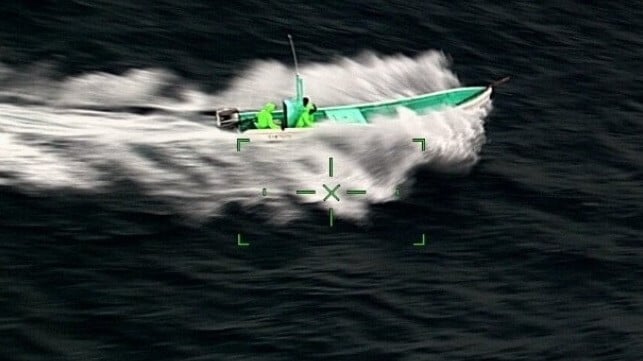Audit: Coast Guard is Only Catching One-Fifth of IUU Fishing Suspects

The Department of Homeland Security's internal watchdog agency reports that the U.S. Coast Guard is letting lots of illegal fishing perpetrators go about their business without interdiction, stymied by a lack of available resources. The problem is almost entirely a Texas issue: 94 percent of all detected IUU fishing incursions occurred in District 8, off the Gulf coast.
Perennially stretched thin by federal underinvestment, the Coast Guard has to make do with deteriorating facilities and (often) aging cutters, the oldest of which are in their fifth or sixth decade in service. Despite its limited resources, it has a globe-spanning mission set with multiple priorities: near-coastal search and rescue; anti-cocaine trafficking in U.S. Southern Command; anti-migration patrols near the southern border; overseas presence and partnership missions in the Mideast and Pacific; ATON installation and repair; disaster response; and regulation of domestic maritime safety and security, among others. Fisheries enforcement falls further down the list, commanding just four percent of all mission hours in FY2023-24.
As a result, according to the department's OIG, the Coast Guard only interdicted about one out of every five illegal fishing vessels that it detected in the U.S. EEZ during this time period. 79 percent of suspected offenders went on their way because Coast Guard assets were not available to pursue them.
The Coast Guard is the only agency with law enforcement authority throughout the U.S. EEZ, and the only agency with the assets to chase down IUU fishing offenders. It has set itself an official target of interdicting 40 percent of detected IUU offenders, below half, but acknowledges that it has not yet reached that mark. Out of 546 detections in FY2023-24, the service interdicted 116 - about 21 percent.
Virtually all of the activity occurred in the U.S. Gulf, where Mexican fishermen routinely cross the maritime boundary line to fish illegally for red snapper. Coastguardsmen in District 8 carried out 114 successful interdictions. Only two interdictions were reported anywhere else in two years - one off New England, and another off the coast of the Pacific Northwest.
Coast Guard districts for Alaska, Hawaii, California, and the Southeast reported small numbers of IUU fishing detections, but zero interdictions.
As an explanation, the Coast Guard said that in FY2023, it had to divert cutter operating hours to counter-migration missions, negatively impacting both its IUU fishing enforcement and counternarcotics efforts. In FY2024, it reported that a surge of Mexican IUU fishing lanchas made it hard to hit percentage performance targets because of the high number of detections.
These law enforcement intercepts are also exceptionally expensive, according to the audit. In FY2023-24, the Coast Guard estimated that it spent $687 million combating IUU fishing. This works out to about $5.9 million per IUU fishing interdiction.
"Although the Coast Guard recognizes IUU fishing as one of the world’s top maritime security threats, its low interdiction rates and limited enforcement hours show a significant gap between the severity of the threat and the level of commitment required to effectively address it," the OIG concluded.
